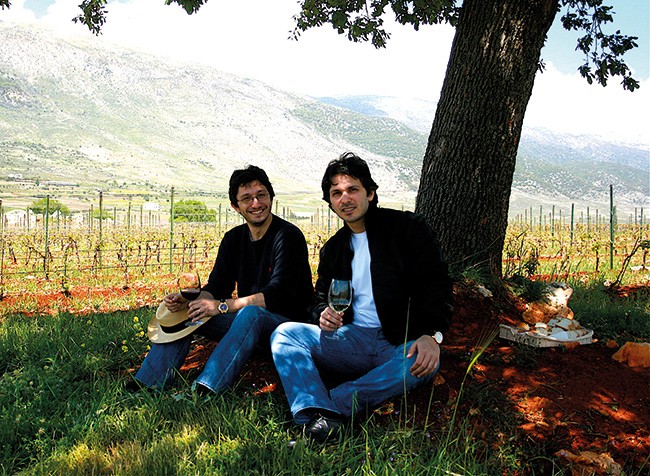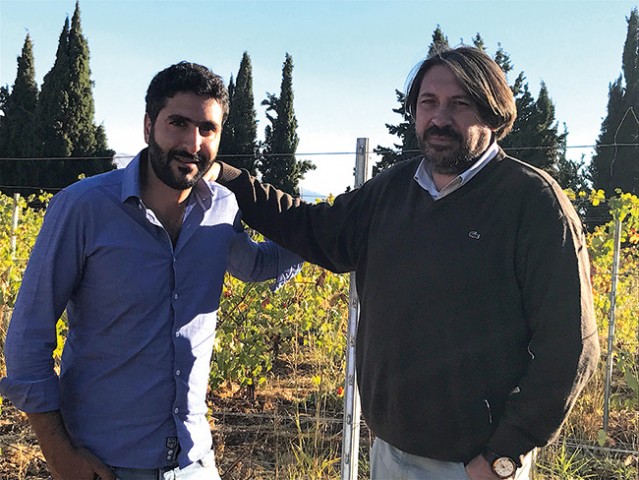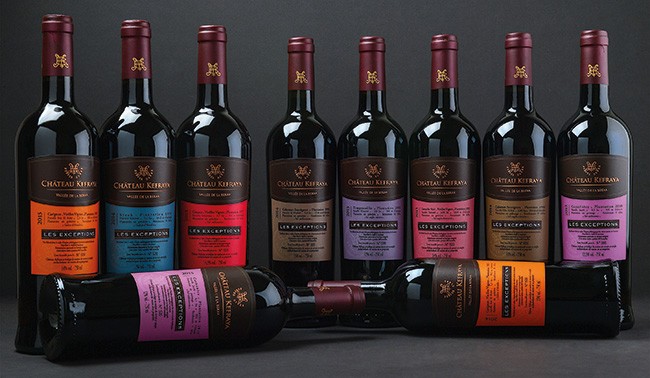The Lebanon of wine is resolutely forward-looking. After a millenial history dedicated to the precious liquid, the country relives a new youth devoted to experiencing. For the last ten years the wine landscape has changed. Some large estates stand out but many small domains appear. The one and the others, conscious of the international market, work the wine under a qualitative and sometimes innovative perspective.

Between the choice of local grape varieties from the 90s by Clos St Thomas (Joe Touma) and Domaine Wardy (Diana Salamé), the diversification of international varietals and new growing and vinification options, a question comes up, namely about terroir and the appellations. The subject is topical for many wine growers, foreign importers, consumers and the Lebanese Ministry of Agriculture. Louis Lahoud, general manager of the Ministry of Agriculture, reminds that he feels concerned by Lebanese wines and that he wants to defend them. In 2012 he implemented the International Day of Lebanese wines in the World. One city in the world welcomes the producers and offers them visibility thanks to meetings with wine shops, importers … Other actions have been done like the creation in May 2013 of the National Institute of Vine and Wine of Lebanon (INVV) of the Ministry that has the mission to structure the vine and wine sectors. Louis Lahoud, also the vice-president of the group of OIV experts, makes the promotion of the Lebanese vineyard easier. He confirms the creation of appellations is planned and depends on how reactive the Institute is.

One specific geographical area appears to be ideal to understand the usefulness of such a project, the Bekaa valley. A CNRS survey taking heed of the geology, rainfall, soil composition, average temperatures, tends to prove the existence of various terroirs from the North to the South of the valley.
Here we will focus on two estates, Château Kefraya and Château Marsyas. They have both willingly chosen quality. The first has a longer experience as founder Michel de Bustros has been making wine since 1975. The second entered the sphere of the quality vineyards with a first cuvee in 2007.
Technical manager and winemaker Fabrice Guiberteau started at Kefraya in 2006. At that time, because of the war, his only priority was to save the crop. Moreover the facilities did not enable him to separate the terroirs. From 2006 to 2008 he noticed a very different gustatory potential from one vineyard to the other. In 2009 he decided to extend the vat room and vinify separately the different wines to study the phenomenon. At first it was an empirical approach, then in front of the results, pedological surveys have been fulfilled in 2014. They confirmed the existence of three terroirs, a first one of clay and limestone on a limestone basis, the second one of clay and sand, the third one, clay and silt. A new stage was reached this year with the crafting of the collection of cuvées Les Exceptions, 10 cuvees made with different grape varieties, vintages and plots to consider like a collection for epicureans. The result is convincing on the palate. The Cinsault Vieilles Vignes [Old Vines] 2016 blooms on a clay and limestone soil to delight the palate. A Grenache Noir Vieilles Vignes [Old Vines] 2015 grows on a clay and silt soil. Each label gives the name of the grape variety, the name of the plot, the type of soil and culture, the yield, the altitude. During the degustation, the parallel with the notion of climats of Burgundy comes up. This is probably a bit early to say but given the results, it is a legitimate idea.

Karim and Sandro Saadé state: “Wine is first the soil”. This idea has been their guideline when in 2004 they decided to make wine in Lebanon. Drawing on their experience of entrepreneurs, on their passion for the vineyard, they bought their estate according to the terroir. To refine their approach, they chose to be consulted by Stéphane Derenoncourt, the identity wine defender. Analysis of the land and prospecting sealed the future of Château Marsyas. The surveys have been achieved at different depths, 30, 60 and 90 cm, which revealed real outlooks. Under 60 cm they found a limestone rock, a precious substrate that ensures the quality and finesse of grand wines. It is covered with ferruginous clay that provides complexity and breadth to the wine. Other analysis of the rainfall and temperatures enabled to consider the lands of the village of Kefraya as an ideal environment. The good weather conditions help avoid most of the fungal diseases and get optimum maturity of the grape. Other factors like wind are very important to create an appropriate microclimate for the vine. Château Marsyas is located in a south-north oriented corridor in the Bekaa valley; in summer it is protected against high temperatures thanks to the fresh winds. Aiming for perfection they chose high planting density, near to biodynamics methods and a specific pruning technique. Asked about the interest of a PGI or an AOP in Bekaa and other Lebanese terroirs, they are very precise. A PGI would provide the consumer with a complete transparency on the product. They would know the origin of the grape and the location of the winery in the vineyard. The importance of a PGI is that the consumer would exactly know what he buys and be able to make a decision in the light of the information available, something that does not exist nowadays. They underline the efficiency of an AOC. It would highlight the difference between the Libanese terroirs, not to create competition but on the contrary to optimize the notion of quality diversity. The soil, the weather, the sun exposure and other factors would be considered.
From this statement it would be interesting to distinguish other terroirs like in Batroun for example. Obviously the future of the Lebanon of wine is ready to bloom again. Some evoke the law 216 of 2000 and the paragraphs 12, 13 and 14 that announce the creation of appellations and their criteria. Now it is up to the winegrowers and the institutions to create a map of the vineyard, traceability of the grapes, specifications, the authorized international or local grape varieties. A challenge to be followed …
